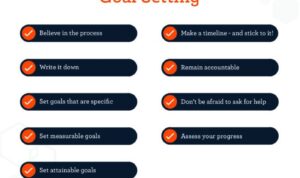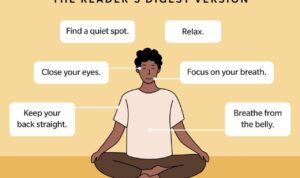Mindfulness Exercises are all about finding inner peace and clarity in a chaotic world, man. Picture yourself taking a deep breath and letting go of all the stress and negativity. Intrigued? Let’s dive into the realm of mindfulness exercises and discover the path to a calmer mind and happier life.
From mindfulness meditation to breathing exercises, we’ll explore different techniques that can transform your mental well-being and help you navigate through the ups and downs of life with ease. Get ready to embark on a journey of self-discovery and inner balance that will leave you feeling refreshed and rejuvenated.
Introduction to Mindfulness Exercises
Mindfulness exercises are practices that help individuals focus on the present moment, increase self-awareness, and reduce stress and anxiety. These exercises are designed to cultivate a sense of calm and improve overall well-being.
Benefits of Practicing Mindfulness Exercises
- Reduces stress and anxiety levels
- Enhances focus and concentration
- Improves emotional regulation
- Promotes better sleep quality
Examples of Popular Mindfulness Exercises
- Mindful Breathing: Focusing on the breath to bring awareness to the present moment.
- Body Scan: Paying attention to each part of the body to relax and release tension.
- Guided Meditation: Listening to a recorded meditation to cultivate mindfulness.
- Walking Meditation: Being aware of each step and movement while walking.
Mindfulness Meditation

Mindfulness meditation involves focusing your mind on the present moment, acknowledging and accepting your thoughts, feelings, and bodily sensations without judgment. It helps you cultivate a sense of awareness and inner peace.
How to Practice Mindfulness Meditation
- Find a quiet and comfortable place to sit or lie down.
- Close your eyes and take deep breaths, focusing on the sensation of the air entering and leaving your body.
- Bring your attention to the present moment, noticing any thoughts or feelings that arise without getting caught up in them.
- Scan your body from head to toe, paying attention to any areas of tension or discomfort.
- Practice deep breathing and relaxation techniques to calm your mind and body.
Effects of Mindfulness Meditation on Mental Well-being, Mindfulness Exercises
- Mindfulness meditation can reduce stress and anxiety by helping you stay grounded in the present moment.
- It promotes emotional regulation and resilience, allowing you to respond to challenging situations with clarity and composure.
- Regular practice of mindfulness meditation can improve focus and concentration, enhancing cognitive function and productivity.
- It fosters self-awareness and compassion, leading to better relationships with yourself and others.
- Studies have shown that mindfulness meditation can have a positive impact on mental health conditions such as depression and PTSD.
Breathing Exercises

Breathing exercises play a crucial role in mindfulness practices as they help individuals focus on the present moment, increase self-awareness, and promote relaxation.
Types of Breathing Exercises
- Deep Breathing: Inhaling deeply through the nose, allowing the belly to expand, and exhaling slowly through the mouth.
- Counted Breaths: Counting each inhale and exhale to maintain focus and concentration.
- 4-7-8 Technique: Inhaling for a count of 4, holding the breath for 7, and exhaling for 8 to calm the nervous system.
- Nostril Breathing: Alternating breathing through each nostril to balance energy and reduce stress.
Benefits of Breathing Exercises
- Reduce Stress: Deep breathing promotes relaxation and reduces the body’s stress response.
- Manage Anxiety: Breathing exercises help calm the mind and reduce symptoms of anxiety.
- Enhance Focus: By focusing on the breath, individuals can improve concentration and mindfulness.
- Improve Sleep: Practicing breathing exercises before bed can aid in falling asleep faster and improving sleep quality.
Body Scan Technique: Mindfulness Exercises
The body scan technique is a mindfulness practice that involves focusing on different parts of the body to increase awareness and promote relaxation.
Performing a Body Scan
To perform a body scan, find a comfortable position either sitting or lying down. Start by bringing your attention to your breath, then slowly move your focus to different areas of your body, starting from your toes all the way up to the top of your head. Notice any sensations, tension, or discomfort without judgment, simply observing and allowing them to be. Take deep breaths as you scan each body part, releasing any tension you may feel.
- Begin by focusing on your toes, then move to your feet and ankles.
- Continue scanning your calves, knees, thighs, and hips.
- Move up to your stomach, chest, back, shoulders, arms, and hands.
- Finally, bring your attention to your neck, face, and head.
By incorporating body scans into your mindfulness routine, you can increase body awareness, reduce stress, and improve overall well-being.
Mindful Walking
Mindful walking is a practice that involves bringing your full attention to the act of walking. It requires you to be fully present in the moment, focusing on the sensations in your body and the movements of your limbs as you walk.
When practicing mindful walking, the connection to mindfulness is evident in the emphasis on being present and aware of your surroundings. Just like mindfulness meditation helps you stay present and focused on your breath, mindful walking allows you to cultivate awareness and presence as you move through space.
Tips for Practicing Mindful Walking
- Avoid distractions: Try to walk in a quiet, peaceful environment where you can fully concentrate on your movements.
- Focus on each step: Pay attention to the sensations in your feet as they make contact with the ground. Notice the shifting of weight and the movement of your muscles.
- Stay present: Be mindful of your surroundings, the sounds you hear, the sights you see, and the smells around you. Stay fully engaged in the present moment.
- Use your breath: Sync your breathing with your steps. Take deep breaths in and out as you walk, allowing your breath to guide your movements.
- Practice gratitude: While walking, take the time to appreciate the ability to move and the beauty of nature around you. Cultivate a sense of gratitude for the present moment.


